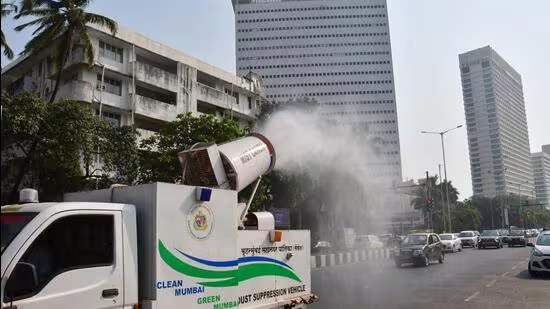Mumbai, India – The Brihanmumbai Municipal Corporation (BMC), the governing civic body responsible for managing disasters in Mumbai, has successfully mitigated approximately 45 percent of risks related to business activities and industrial operations within the city.
This achievement is primarily attributed to the BMC’s strategic development of civic infrastructures aimed at reducing the impact of climate change and ensuring the efficient delivery of various public services. This significant progress was highlighted during a meeting organised by the Disaster Management Department of the BMC on August 23. The meeting, which included journalists from the Indo-Pacific region, was addressed by the Chief of Business Development and the Director of the Disaster Management Department, both of whom are based in Mumbai.
During the session, the Director of Disaster Management outlined five major hazards facing Mumbai hydrological and climatological disasters, geological disasters caused by earthquakes and landslides, chemical and industrial disasters, accident-related disasters, and epidemics. These potential threats are particularly concerning given Mumbai’s vulnerabilities, including the presence of 16,000 dilapidated buildings, a population of 2 million residents living in high-risk zones, and 9,000 high-rise buildings exceeding 70 meters in height.
The official further explained that in response to these vulnerabilities, the BMC has established a disaster recovery site at the City Institute of Disaster Management. This facility is a replica of the main emergency operations centre located at the municipal head office, and both centres operate 24/7, year-round, to manage and mitigate disaster risks. When asked about the economic impact of the BMC’s initiatives, an official noted, “While we have not conducted specific research on the economic figures, the corporation effectively mitigates about 45 percent of business and industry risks in Mumbai.” This proactive approach is crucial for attracting foreign investment, as potential investors often prioritise the stability and safety of their business operations in the city.
The Chief of Business Development also detailed the various policies implemented by the BMC, emphasising the municipal authorities’ responsibilities and powers in executing both obligatory and discretionary cooperation duties. Additionally, she highlighted the advanced technologies employed by the BMC, including mobile applications, digital hoardings, QR codes, CCTV monitoring, an online complaint redressal system, and a healthcare management information system operational across all municipal hospitals, alongside 15 other departmental services. She further added, “The BMC, also known as the Municipal Corporation of Greater Mumbai (MCGM), is not only the governing civic body of Mumbai but also India’s wealthiest municipal corporation. Its annual budget surpasses that of several smaller Indian states.”
The BMC Is led by an Indian Administrative Service (IAS) officer who serves as the Municipal Commissioner, wielding executive power. The Municipal Commissioner is tasked with developing and maintaining Mumbai’s civic infrastructure, which includes the city’s water supply, roads, stormwater drainage systems, and the efficient provision of various public services to the citizens of Mumbai.




